Race & trip report: Vidösternsimmet
I completed my longest swim to date – 21.5 km! My longest swim distance has now exceeded my longest run distance (half marathon).
I participated in the 11th edition of Vidösternsimmet, held on 2022-08-13. I completed the full distance race, 21.5 km from Osudden to Sundet, in 10:07:22. This was my 5th long distance swim (at least 10 km, or a Scandinavian mile) I have done in my life since 2019.
Preface
I signed up for this race early February 2020, just before COVID stopped world travel. At that time, my plan was to combine the trip with an orienteering trip to Poland, and this race would provide a baseline for me to plan my English Channel training afterwards, building up from my previous longest race, Cold Half, 14 km in the open sea.
The pandemic shut the whole world and the race was rolled over to 2021. Then, as border closures were still in place, I, as an international participant, was allowed to roll the registration over again to 2022.
However, in September 2021. My swimming life was destroyed. I started an English Channel attempt without enough training as my slot, which I signed up just days before I entered the 2020 edition of Vidösternsimmet, could not be postponed to 2022, and I couldn’t find people to convert it to a relay as well. Force 4 blew up, I ran out of strength, missed the tide turn, and was ordered out by the pilot and crew after 14 hours in water. In the following weeks after my failure, I offended nearly everyone in my swimming group as well talking about my failure, and lost all my swimming friends in the area I lived in.
In November, I tried to recover from my traumatic experience and signed up for the BLDSA Windermere race (17 km) in September 2022, as it was still in my bucket list and would be a good little step up from my previous longest swim, 16 km. That race would perform the same function as Vidösternsimmet in terms of my training, therefore I hoped to get rid of my registration by transferring it to one of my swimming friends.
However, I didn’t get any expression of interest from any friends I asked, so by the end of June I decided to make the trip despite that there are no orienteering races for me to combine to make the trip worthwhile. If this race was held one week earlier, I would sign up for O-ringen after my trip to Poland for World Trail Orienteering Championships, and make it a 2.5-week long trip instead. So I ended up travelling overseas just for one swimming race – something that I don’t do under normal circumstances.
Trip planning
The race was held in Värnamo in Jönköping county. Unfortunately departing from the UK, flying is usually the only practical option to most places in continental Europe as more environmentally-friendly forms of travel take much longer than flying, and they can’t price-compete with low cost airlines as well.
The closest international airport to Värnamo, where the race was held, is Gothenburg. However, at the time I booked my trip, there were no flights from London or nearby to there at my desired price level, and there was also no award availability on British Airways from London to Gothenburg as well on the date of my travel. Therefore I booked a mileage ticket from London Heathrow to the second closest option – Copenhagen flying on 2022-08-11. For the return travel, as there was no award availability from either Gothenburg or Copenhagen, I had no other choices but to pay for a Ryanair flight at a higher-than-desired price flying at an inconvenient time, 2022-08-14 late night to an inconvenient airport Stansted, costing 518 kr plus 147 kr in priority boarding in order to have extra hand luggage.
In order to get from Copenhagen Airport to Värnamo, I would have to take a commuter train, Øresundståg to Malmö, transfer to a high-speed long distance train, SJ Snabbtåg to Alvesta, then another commuter train, Krösatågen to Värnamo, while for the return journey, I would have to take the Krösatågen commuter train to Jönköping (a mistake – detail in the last section) and a coach to Gothenburg Landvetter Airport. I booked a through train ticket from Malmö (another mistake) to Värnamo, with both the long-distance and commuter train fares included, and a coach ticket from Jönköping to Landvetter Airport.
I would need 3 nights of accommodation. My initial plan was to do the first night in Malmö, the second night (before race day) in Värnamo, and the final night (after race day) in Jönköping, however, as I was busy planning my trip to Poland, and various other trips for orienteering as well, I didn’t actually book any accommodation until August.
My plan to stay in Malmö for the first night was a mistake – there was a much cheaper hostel in Lund instead. As a result I booked the hostel in Lund and wasted the Malmö – Lund section of my train ticket. The money wasted was not much.
However, I made another mistake which cost me a lot here, and only realised after the trip. I downloaded the train timetable in PDF version from Länstrafiken, the agency managing transport in Jönköping county, which showed me that I might not be able to make the last train from Värnamo to Jönköping in time if I had a late finish in the race. As a result I abandoned my plan to stay in Jönköping for the final night and booked a hotel in Värnamo for two nights, before and after the race day, travelling to Jönköping on the day after race day by train. This was a massive mistake which I am going to describe towards the end of this blog post.
My journey to the race
I really can’t think of a worse trip than this. Nearly every flight and train I took was delayed in my whole trip and I was cocked up so many times in my trip.
The first obstacle I had to overcome was the trip to Heathrow Airport. The fastest way from my home to the airport was to take a bus to Kilburn Park, the Tube to Paddington, then Heathrow Express to the airport. However, this method was extremely expensive – I would have to pay the bus, tube and train fare separately, costing me more than £20 in total just to get to the airport. There were other options in between but I had decided to go for the absolute cheapest option costing £1.25 only, by walking a long way to Brondesbury station, and using the Overground and the Tube all the way to the airport.
According to the map, I would need to transfer at Gunnersbury from the Overground to the District, then again at Turnham Green to the Piccadilly in order to get to the airport. However, what the map didn’t show me was that in fact Piccadilly trains didn’t stop at Turnham Green except early morning and late evening, which caused me confusion when I alighted the District train there, not seeing any signs for the Piccadilly and seeing no passenger trains calling at the Piccadilly platform. I wasted 15 minutes jumping back on the train I took from Richmond, realising there was something wrong, and returned to Turnham Green. Finally I took a District train to Acton Town to transfer to the Piccadilly.
However, at Acton Town, a fire broke out which stopped all westbound trains. Had I not wasted 15 minutes before I would have taken the last Piccadilly to the airport before the fire broke out. Trains had stopped running with announcements made. First, an announcement was made that trains would run again shortly. Then, another announcement was made that people needing to go to the airport in a hurry should take the District to Ealing Broadway to change for the Elizabeth line. A while later, as the District had also stopped running, another announcement was made that people in a hurry should seek alternative transport. The status update in the TfL Go app changed from minor disruption, then major disruption, and finally part suspended.
As my flight was also delayed, and I had no means to get to Ealing Broadway without paying for another bus, I waited on the platform for the firemen to put out the fire. After 45 minutes the trains started running again, and I got to the airport, still on time for the original scheduled flight departure. However, as the result of the disruption, I went over the maximum journey time in the Oyster system, 1 hours and 50 minutes for a 5-zone journey, and the exit gate charged me another £3.95 in addition to the £3.95 deducted on every, when the trip should only cost me £1.25. I would have to chase TfL back for a refund afterwards.
I flew to Copenhagen with a minor delay. After alighting the flight and passing through the immigration and customs, I had to take the commuter train to Lund.
I went to the ticket machine and tried to buy my ticket. Some ticket machines there accepted cash, while the others were card only. The ticket cost 109 kr. When I was ready to pay I inserted my cash, which I took from the bank 2 years ago in anticipation of this trip, into the machine. However, none of my banknotes were accepted. I then tried another machine, the same happened. Unfortunately Sweden has already got rid of all ticket offices in its train network. It was basically impossible for one to find a member of the staff for help. I looked for some other sets of machines – those operated by DSB selling tickets to Sweden only, and those operated by SJ selling tickets to the whole Swedish network, but none of those machines accepted cash. I returned to the main set of machines and tried the third one, and there was a sticker saying “only Danish money” at the banknote slot.
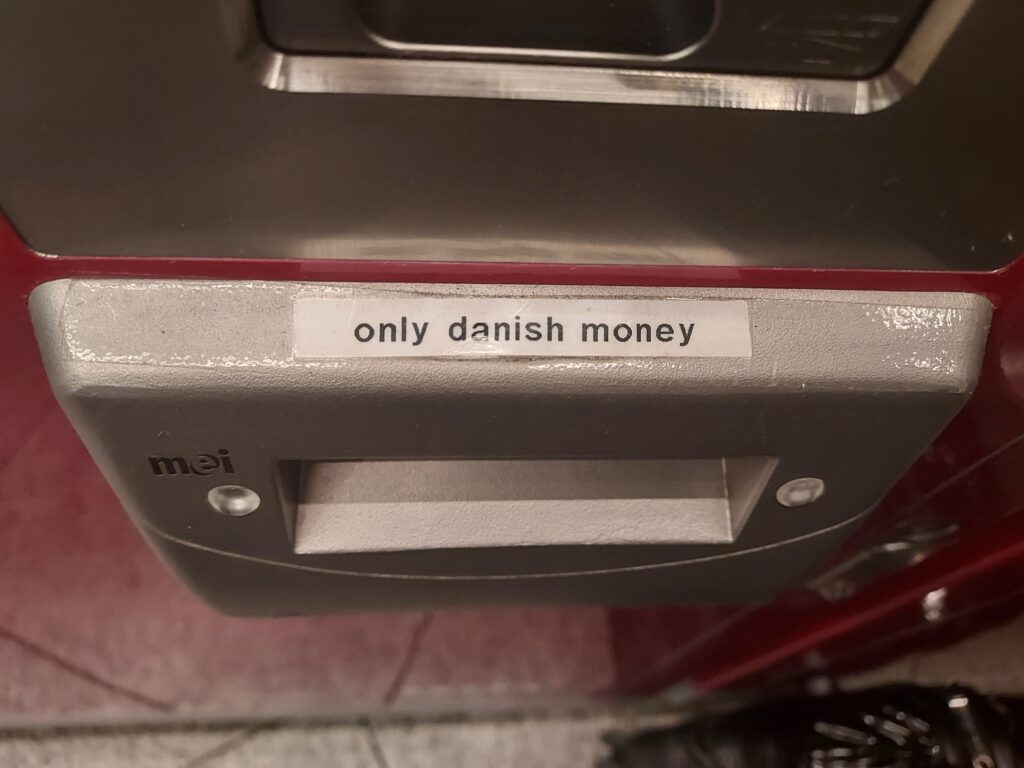
Who the hell would think that I would need Danish money to buy Swedish train tickets?! I then paid by card instead, and the ticket turned out to be priced in Danish kronor, rather than Swedish kronor. The ticket price, 109 DKK, was equivalent to 152 SEK.
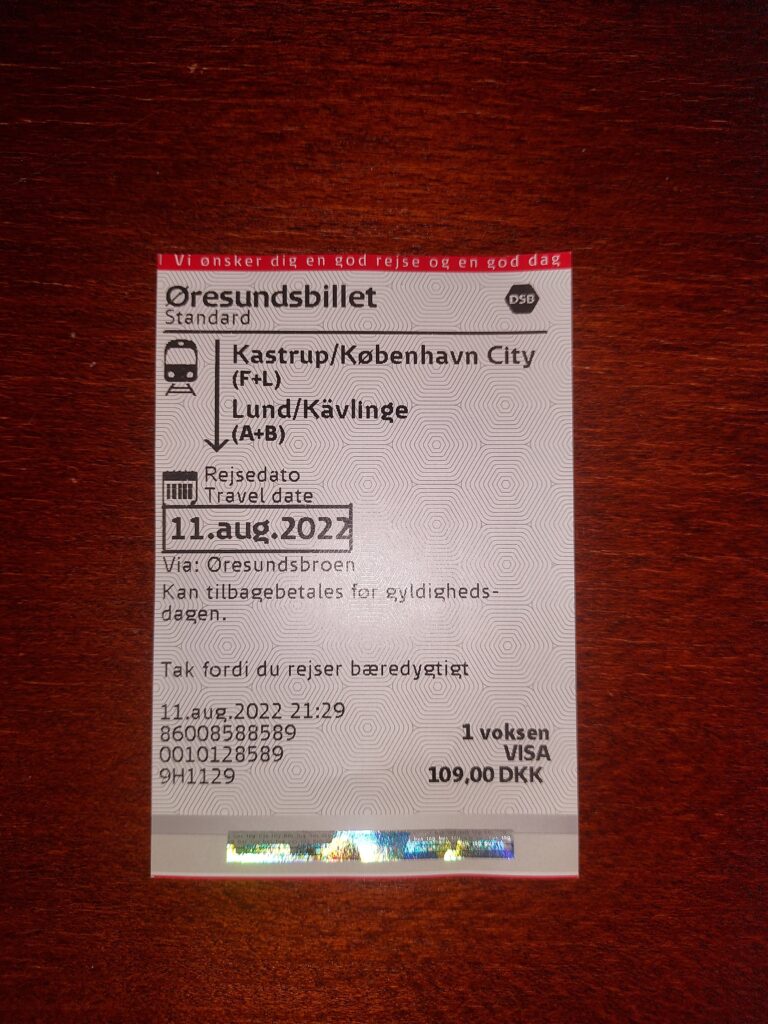
Swedish X2000 high speed trains also serve the station as well. I miss the days when X2000 served the Kowloon-Canton Railway!
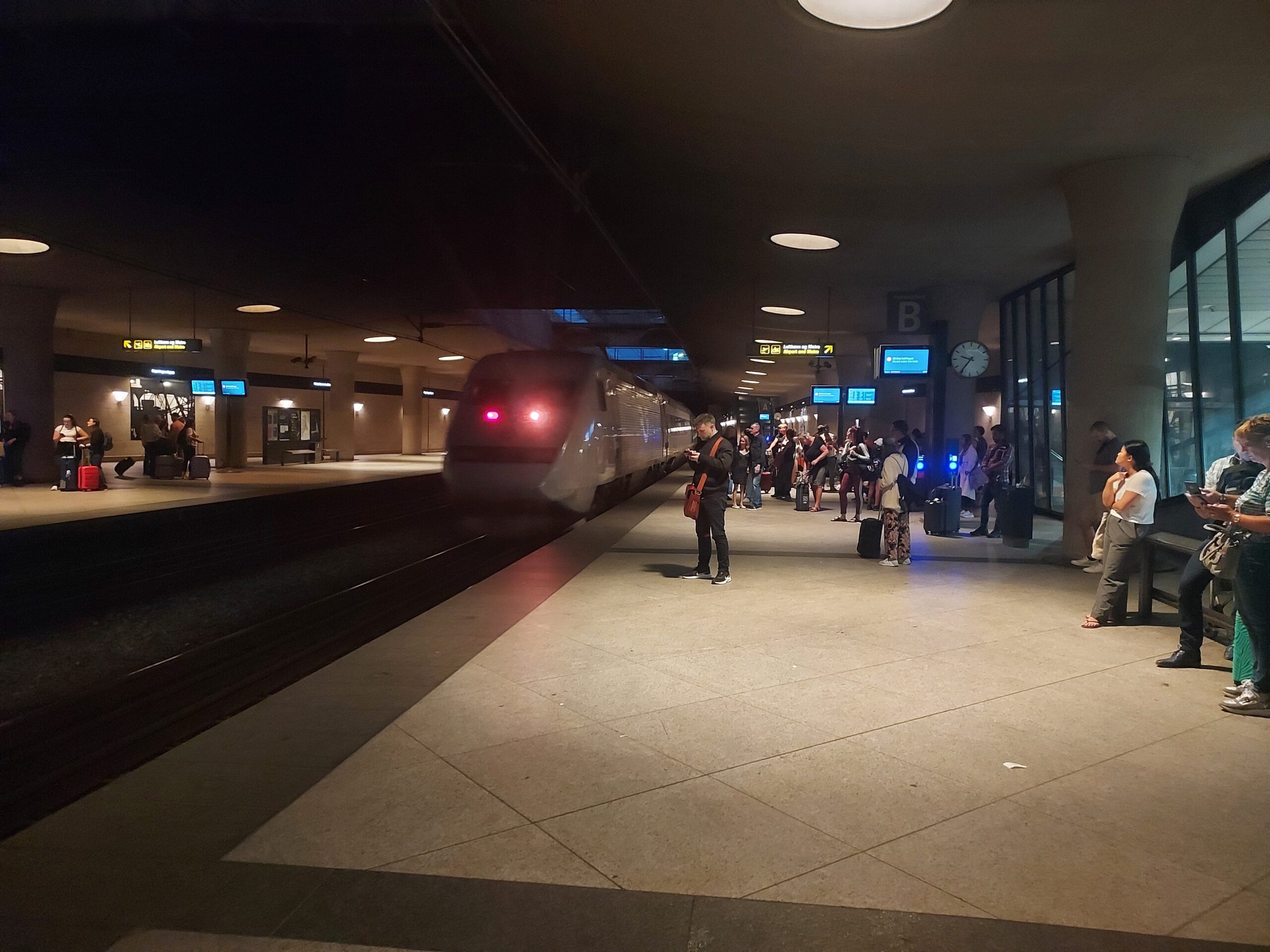
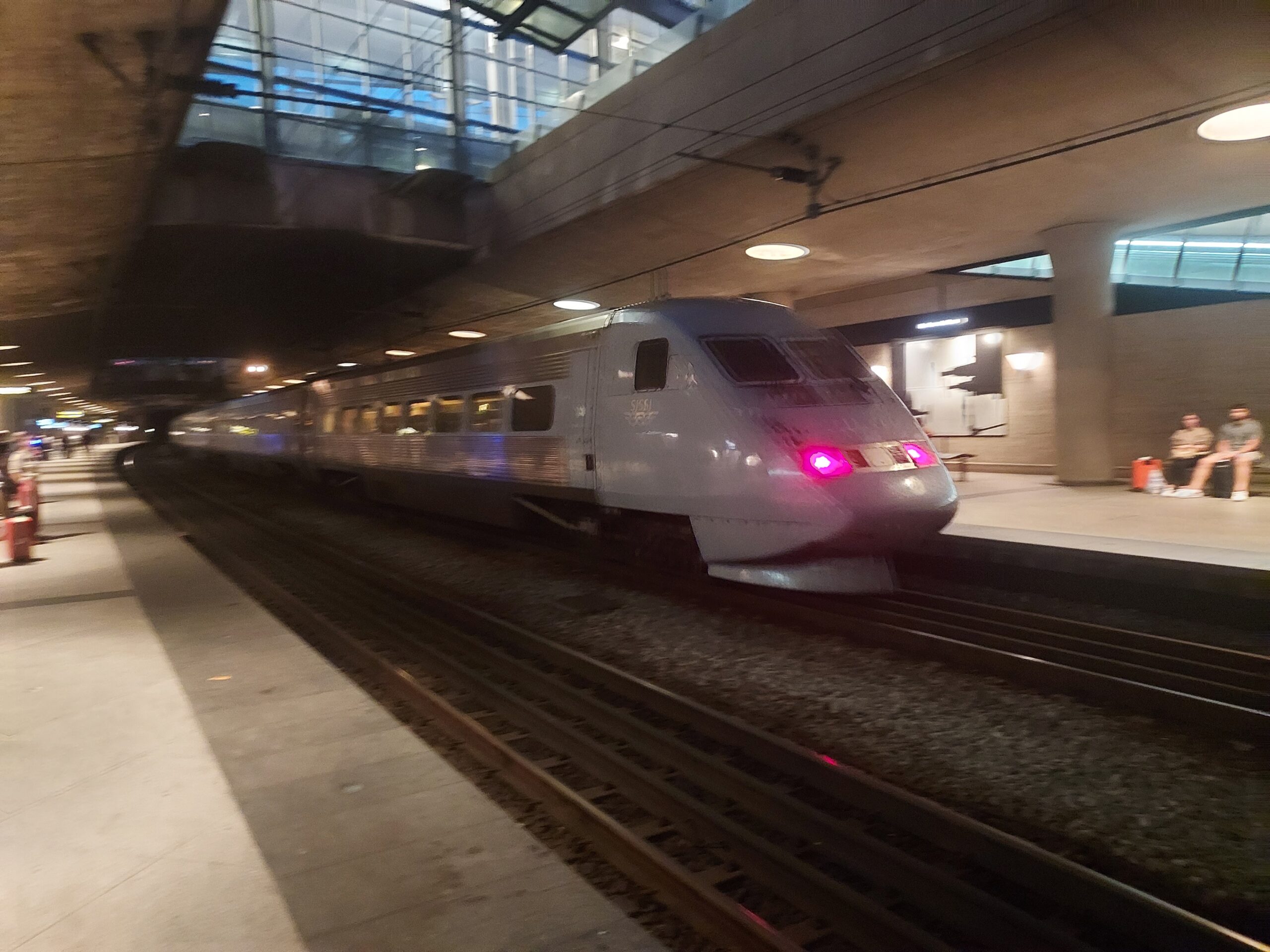
The train I took was a commuter train, which had a large multi-purpose space.
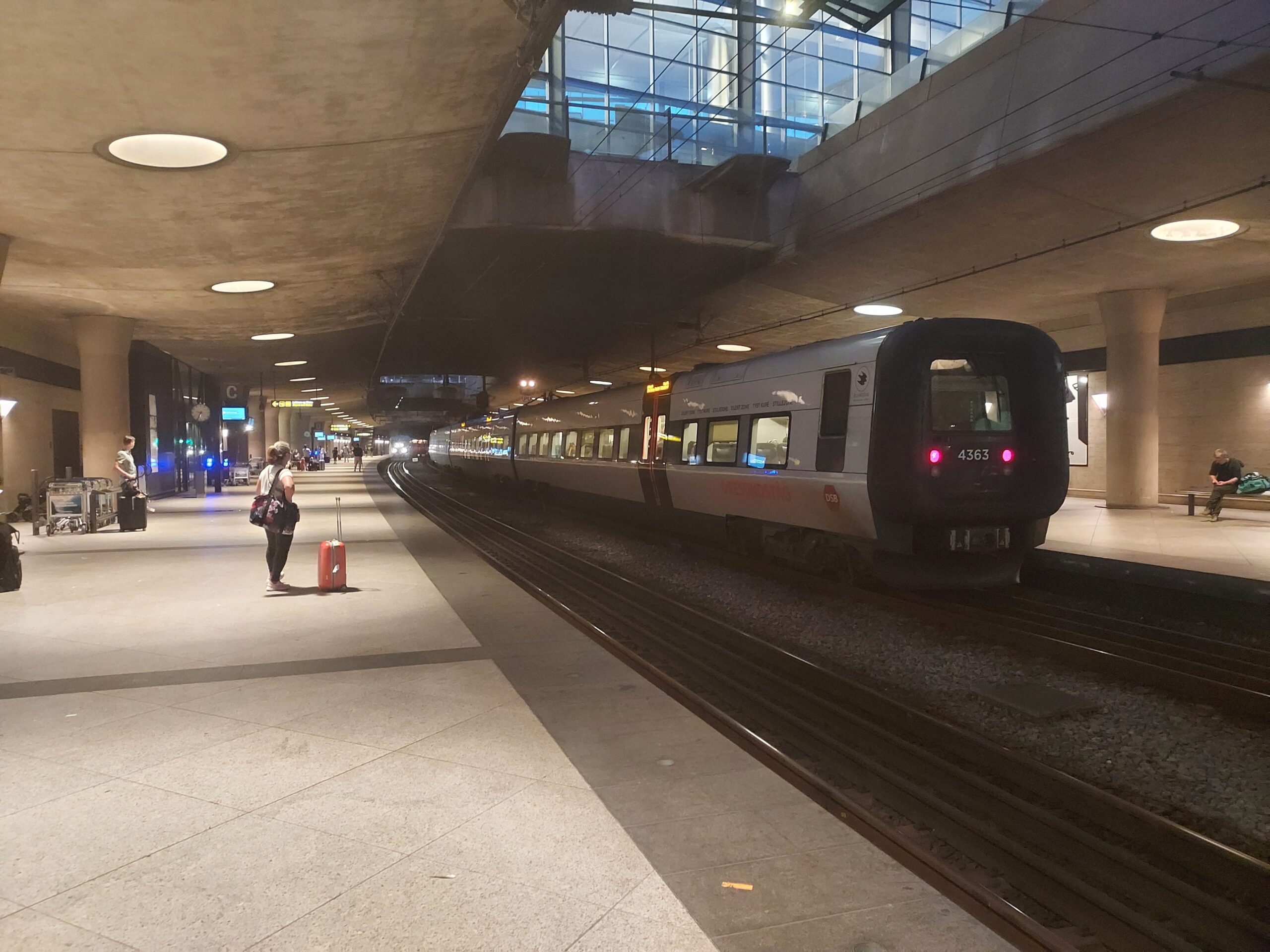
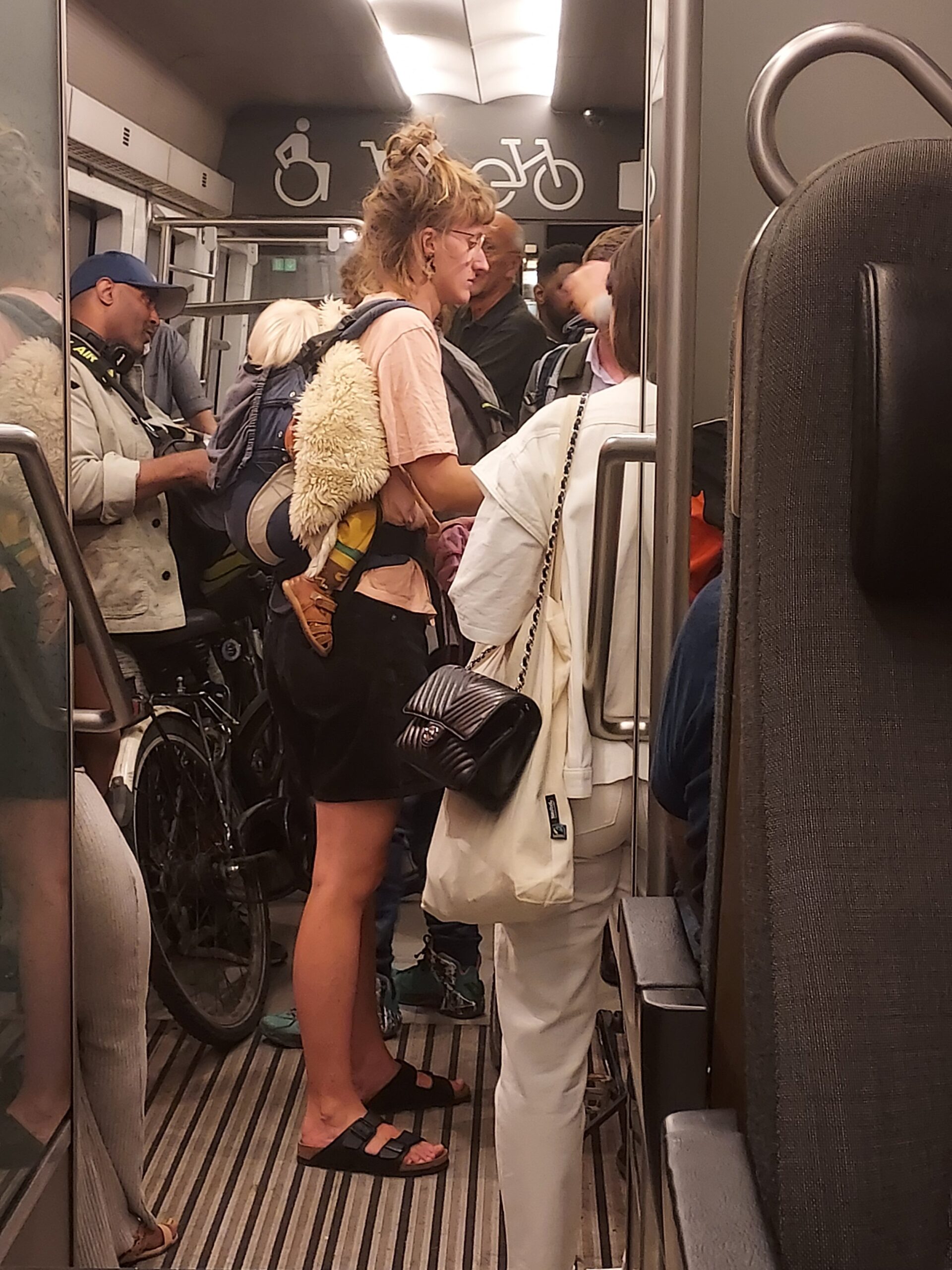
After I reached Lund, I bought food from the supermarket then went straight into the hostel. On the next day, I resumed my journey to Värnamo. I took an X2000 high-speed train to Alvesta, then a commuter train to Värnamo and checked in the hotel.
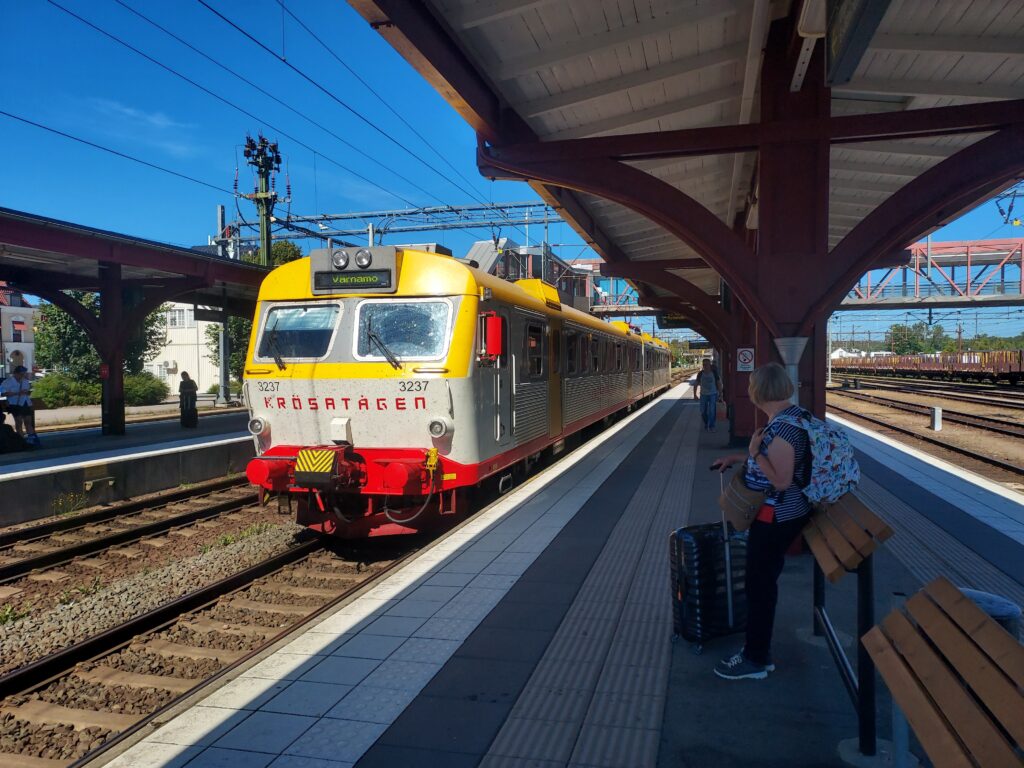
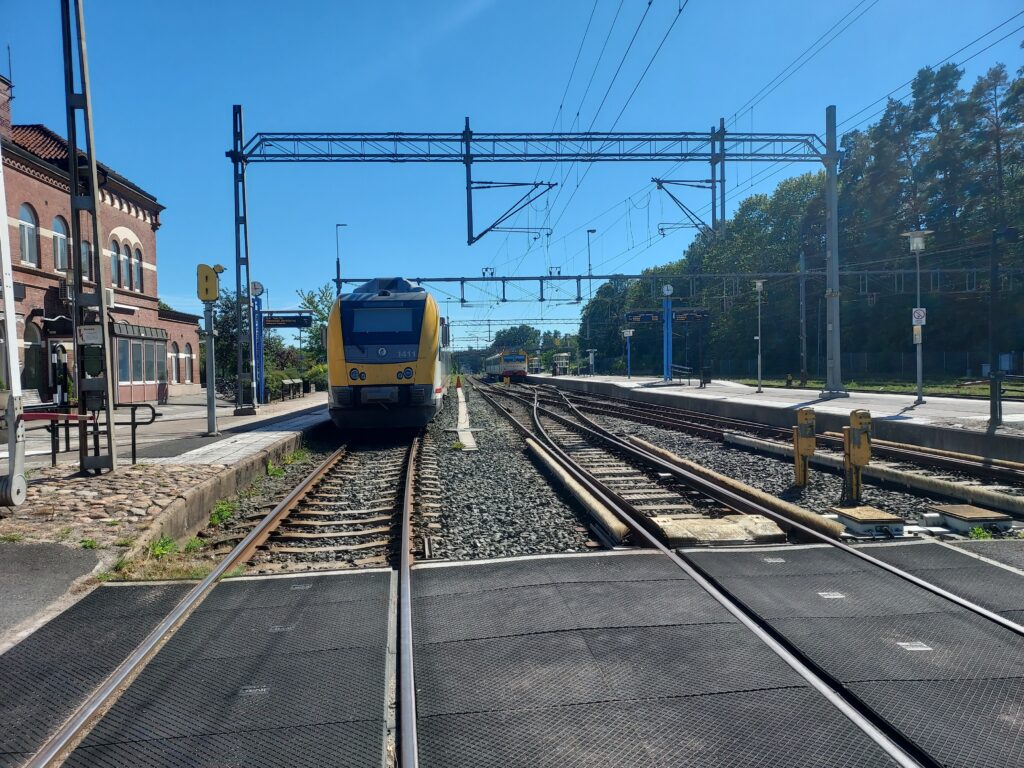
At 18:15, I went to the organiser hotel, Best Western Hotel Värnamo, for the mandatory pre-race briefing, then a pasta dinner afterwards. I met Rebecca for the first time, hearing her talking about the weather and deciding to change from the wetsuit category to the non-wetsuit category.
The race
There were 4 distances on offer: +42 km Viking, +21 km classic, +6 km sprint and +0.5 km lilla.
The +21 km classic distance started at the northern shore of the lake, Osudden, went along the eastern shore of the lake, passing through 4 checkpoints at Funtabo (3.7 km), Tånnö (7.6 km), E4:an Camping (13.1 km) and Ekens Camping (16.5 km), an optional feeding station at Gyllene Rasten (19 km) and finished at Sundet (21.5 km). There were 22 buoys set up along the course. The +6 km sprint distance was the last 6 km of the +21 km classic distance, and the +0.5 km lilla was the beginner event on the final part of the course, held before the +21 km and +6 km swimmers arrived. The ultra-ultra Viking challenge, which was not for me, was to start at the finish in teams of 2 or 3 the night before and swim the whole length of the lake to the +21 km start with kayak support, then join the regular +21 km classic distance race back to the finish.
The weather on the race day was perfect. There was no wind. The lake was as calm as a mirror. It was warm and sunny. The water temperature was 21°C and the air temperature peaked at 28°C. I knew I could definitely finish this race under perfect conditions, although it was a bit too hot to my liking. Because of the hot temperature, some people changed their mind at the pre-race meeting from the wetsuit class to the non-wetsuit class, and the organiser told us to remove the swim cap if we felt hot in the race. My target time for the race was 9 hours, averaging 2.39 km/h, but I thought about if it would be possible to get even faster as well.
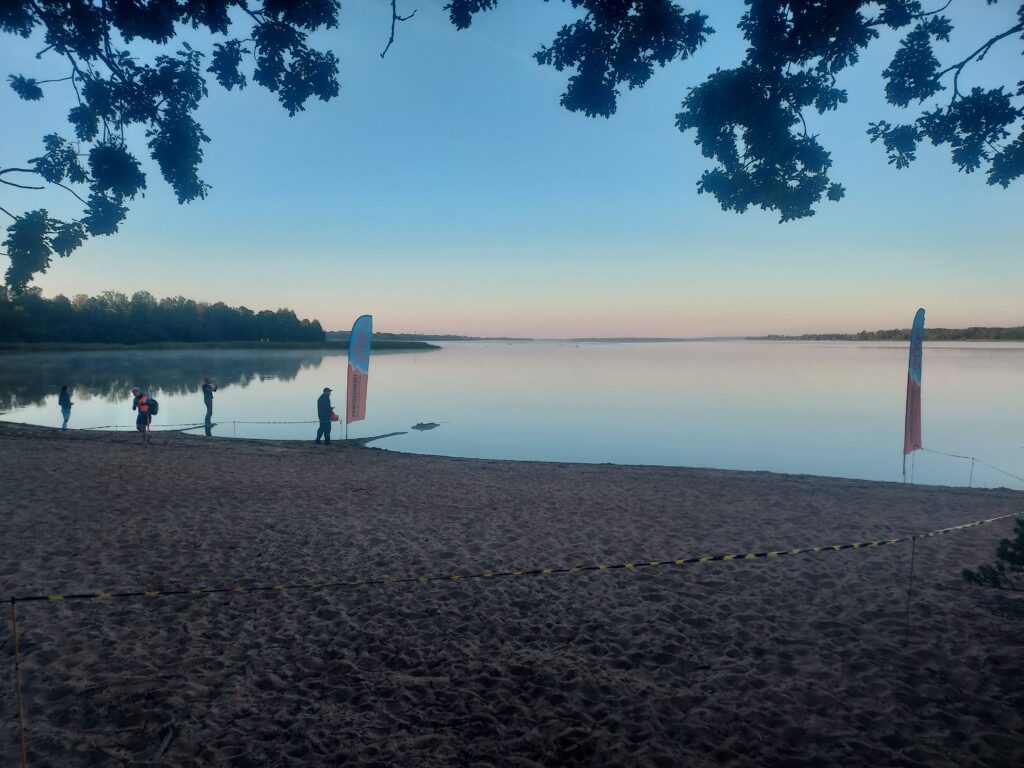
0.0 – 3.7 km
The race started at 07:00:59, and the cut off at the 1st check point was 08:50. The water was red and dark – common in small lakes in Finland and Sweden. The buoys 1 to 4 were in this section. Not long after the start I got a good draft and stayed on her feet all the way to the first feeding station. I arrived the feeding station at 08:19:17, 1:18:18 after the start, i.e. 2.84 km/h in this section. The feeding station was a raft on water, with the left side offering fast food and the right side offering slow food. I entered the left lane, consumed 3 packs of gel (each containing 30 g of carbohydrates) and some water, and went on the race. The girl I drafted entered the right lane, and I left the station much earlier than her. According to the race results, the girl I was following was likely to be Julia Pritchard.
3.7 – 7.6 km
Despite I left the feed station much earlier than her, I was caught up again at buoy 5. However, it became harder and harder for me to stay on her feet, and when I reached buoy 6 I let go of her. When I reached the second checkpoint after buoy 8, she had already completed her feed and was exiting it.
The cut off of the second check point was 11:00, and I entered there at 09:57:15. I took 1:37:58 for the 3.9 km section, which meant the speed was 2.39 km/h. I took gels and bananas at the feed stations.
7.6 – 13.1 km
I might have miscalculated my food at the 2nd check point (I hadn’t notice some gels were 20 g of carbohydrates instead of 30 g) and it then cost me in this section. This was the longest section of the race, 5.5 km long. At that time I had already started feeling fatigue in my back but I still had a really long way to go (I normally only expect fatigue start building up at 2/3 of the race), but my athleticism carried me on through this long section. There was no longer a pack for me to draft off. I started seeing people abandoning the race after buoy 10 despite the perfect conditions. At every buoy passed, it felt daunting thinking how long it would be to the next one, when I had no one to help me stay on pace.
I was so hungry and I ran out of strength. I arrived the 3rd check point after passing buoys 9 to 12 at 12:38:36. The 5.5 km section took me 2:40:43, which meant my speed had further dropped to 2.05 km/h.
13.1 – 16.5 km
Although I felt that I regained strength after having lots of food at the 3rd check point, my speed had never recovered. I began to be caught up my people behind me. I reached the 6 km start very close to their start time at 14:00 so I saw a pack of people, however, I no longer had the ability to get my speed up and stay on feet. Whenever I wanted to focus on my form and get a long nice stroke, I felt pain in my lats. I passed buoys 13 to 15 on the way. Although the 4th check point was supposed to be 1 km after the 6 km start, it took me so long to reach there.
I arrived the 4th check point at 14:31:03. The cut off time there was 15:15. I also saw another swimmer pulling out of the race there as well. The 3.4 km section took me 1:51:56, which meant my speed dropped further to 1.82 km/h. I really didn’t expect such a huge speed drop. I expected that I could average 2.4 km/h for the race, starting off at about 2.6 – 2.7 km/h and ending at 2.1 – 2.2 km/h. At that moment a 9-hour finish had became hopeless, I was doubting if I could even complete the race in 10 hours as well, if not I might even have danger making the finish cut off, with 5 km and go and just less than 3 hours from the finish cut-off.
16.5 – 21.5 km
I had already passed my longest distance swum before. The buoys were a bit closer in the final section, with buoys 16 – 22 en route, but I still didn’t feel any faster in passing the buoys. The pack of 6 km swimmers had already long gone ahead of me.
I had already lost any hope or spirit, and the only thing I wanted was to end my suffering as soon as possible by getting to the finish. However, whenever I tried to focus on my form and efficiency, the pain in my lats was so strong that I had to cut short my stroke. By the time I passed buoy 20, every single stroke was adding pain to my lats that I couldn’t even swim continuously, and the pain started to become intolerable. Although there were only two buoys left, I couldn’t build up my speed for the finish at all. I had to stop every minute to let my pain go a bit before swimming again.
After buoy 21, the bridge to the finish entered my view, but it still looked very far away with buoy 22 in between. After buoy 22, it looked a bit, a really little bit closer, but still not close enough for me to ignore my pain and speed all the way through. I saw a green buoy on the way approaching the bridge which marked the start of the +500 m “lilla” race. I felt relieved at that moment knowing that I would arrive the finish before the cut off, but it was already too late to make a 10-hour finish. At that point, even half a kilometre in the water would take me 15 minutes.
Then I saw a checker buoy – the same marking as those earlier in the race placed about 150 – 200 m before land-based feed stations. The finish was close now. I knew the pain would be over soon so I kept swimming, but I really couldn’t increase my speed any more. I went under the bridge. Only at that point the finish banner entered my view. I raised my arm and hit it hard on the banner to finish my race then left the water at the ramp. It was an effort even to stand up as my whole upper body was in pain.
My official finish time of day was 17:08:20, which was 10:07:21 after the start, barely making the 10.5 hours cut off. I used 2:36:39 for the last 5 km section, i.e. 1.92 km/h, slightly faster than the 4th section but still much slower than I expected myself to perform. I was the 12th out of 12 finishers in the non-wetsuit category, although there were a few finishers behind me in the wetsuit category.
Post race
I really appreciated the care from the organiser. There was a doctor at the feed stations and in the second 10 km of the race, the doctor actually recognised me that I would have lots of gels to keep me going. When I finished the race, the organiser had a close eye on me, making sure that I was well until I was driven away.
I had some food and dessert at the finish, and met Rebecca again. She offered me a ride with her group as there was a space in their car and they were going in the same direction. I asked where did they obtain the car and found out that they drove the car all the way from the UK using the Eurotunnel, stopping off various places en-route!!!
We also talked that the last year’s race was so windy. If I was here last year I probably couldn’t finish the race, and if I couldn’t finish the race I would cancel my Channel slot immediately, throwing away my deposit.
Before the race day, I saw a family having a sushi dinner back in the hotel, so after the race I went to the sushi restaurant I saw while coming to Värnamo. I ordered 32 pieces and consumed them all. After I went back to the hotel room, I felt so bad about the race and had to readjust my expectation of my coming race, realising that the pace I entered into the entry form, while achievable for a 5 km race, had become unrealistic over a much longer distance, so I sent an email immediately.
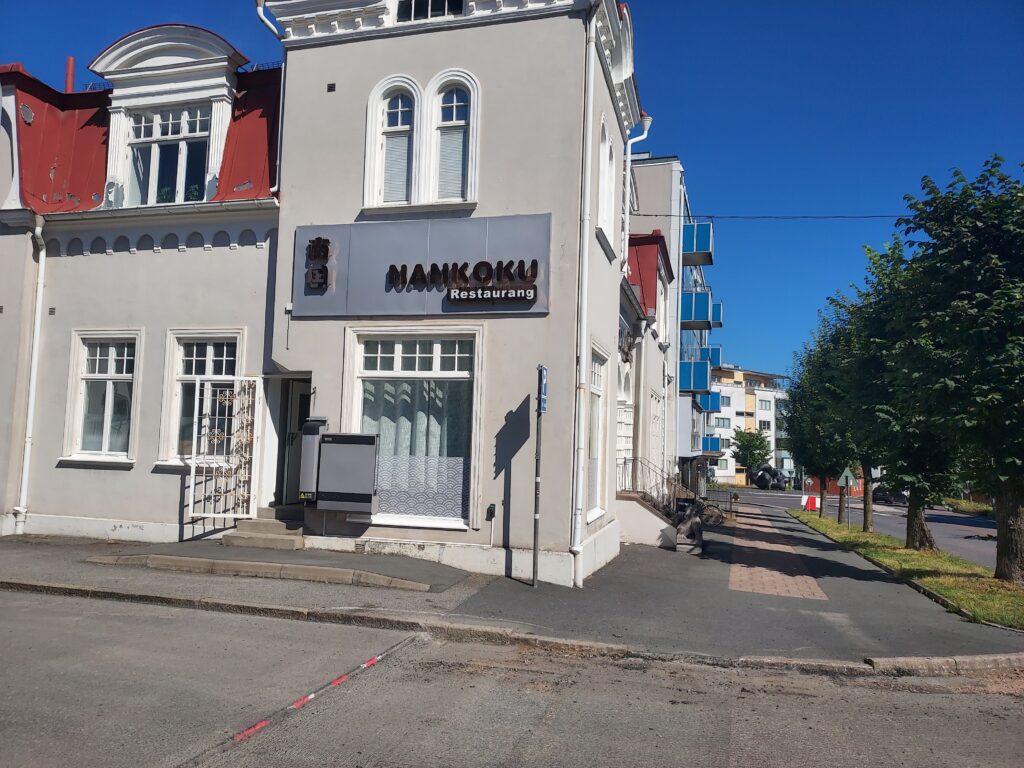
My mood was so bad that I didn’t even want to sleep despite extremely tired, so I went to bad very late.
Journey back home
I woke up late and stayed in the hotel room until the check out time of 12:00. However, it didn’t really fit the train schedule but Värnamo was a boring place and I had nowhere to go, so I went straight to the station and see if there were any other trains going to the same direction anyway, but there weren’t.
There was a ticket machine in the station so I bought a ticket there, but the design of the machine was so bad. It was really confusing. I just wanted a damn ticket but after entering the destination it showed a journey planner, and none of the journeys shown matched the one coming next in the PDF timetable!
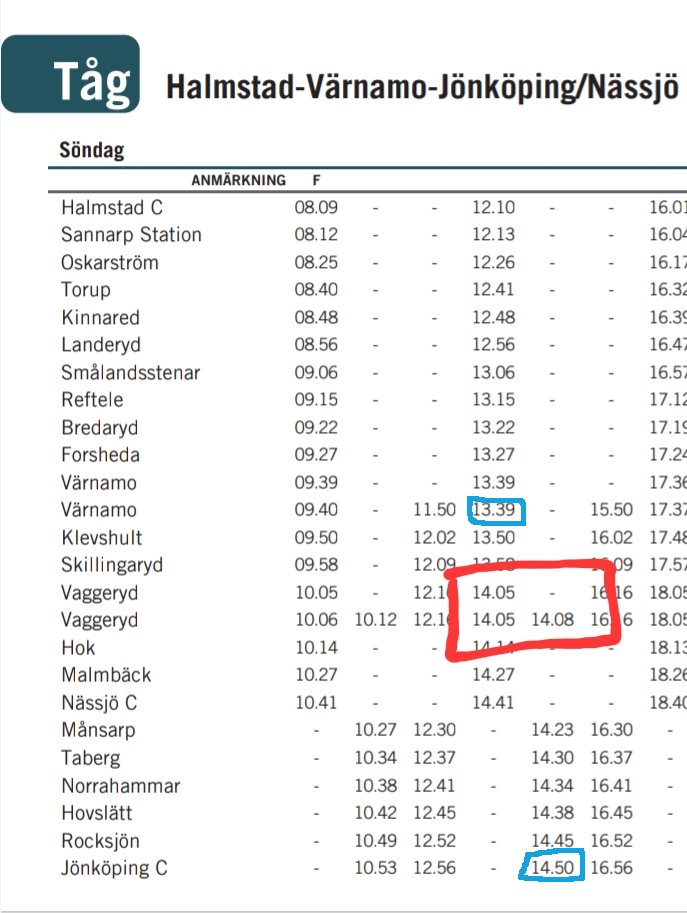
The journey planner only told me to take a 500 bus, which took slightly longer than the train but would result in the earliest arrival time as there was still more than an hour until the train departure, or to take the train and transfer at Nässjö and adding nearly an hour to my journey compared to the times shown above, which was way out of the line of route. However, as I didn’t plan to take a bus, didn’t know the existence of the bus route when planning the journey, and the information showed me that the bus doesn’t run into the central station itself, where the long-distance coaches depart, I waited for another hour in order to travel on the train as shown above. I chose the journey matching the departure time in order to buy a ticket, despite it was not the journey I intended to take.
However, the ticket machine didn’t accept cash. After a Google search, it seemed that the whole network had become cash-free, that cash could only be used at the travel centre or at retailers, so I paid by card.
The train departed on time. However, when it arrived Skillingaryd, people all left the train. I didn’t know enough Swedish to understand what was spoken in the announcement before, but apparently at the station I heard that the train was going back to Halmstad instead of continuing the journey, and I had to switch to another train which would carry on the journey. So I switched trains, but as the result of this, the train then went behind the schedule. I needed to transfer to another train starting at Vaggeryd, one station after the unscheduled train change took place, and the delay couldn’t be recovered in such a short distance. It arrived Vaggeryd 8 minutes late but the connecting train was already gone, and the conductor told me to take a 500 bus.
The Swedish railway network was so difficult to use and so customer unfriendly that not only we can’t buy train tickets using Swedish cash, but also it is virtually impossible to get help when anything goes wrong on the railways, as there are no ticket offices and no staff around. When I left the train at Vaggeryd, the next train to Jönköping would come only after 2 hours, and the next 500 bus would only come after 45 minutes, so I hoped to find some help if it was other transport that could get me there sooner. However, not only there are no ticket offices, I couldn’t even see a ticket machine at Vaggeryd! I found a electronic departure board, and a few buttons to press along with a speaker, but unfortunately it is not a help point to connect to customer service like what we normally see in the UK, but instead it just speaks out the departure / arrival information when the button is pressed, for people with eyesight disabilities. I eventually dialled the customer service hotline of Länstrafiken and got told that there was nothing other than the 500 bus to get me to Jönköping. I waited until the next bus came and boarded it. The bus was a luxurious double decker bus and the destination blind shows “express bus” – I didn’t even know that these kinds of buses are used in local traffic in Sweden.
Jönköping is a really nice place, a “seaside” (the Swedish words for a lake and the sea are the same – sjö) city with high-rise buildings and a beach, but when I finally got there, it was already too late to do anything useful there, and I was so stressed from the train delay before as well, checking if I was eligible for a compensation or not as a result of a missed connection. If I found out that there is a bus between Värnamo and Jönköping in my pre-trip planning, and that bus actually runs till late, I would have saved hundreds of kronor in accommodation by taking that bus right after the race to stay in a hostel in Jönköping, and had a nice beach day out and exploring the city, rather than wasting the whole Sunday doing nothing productive.

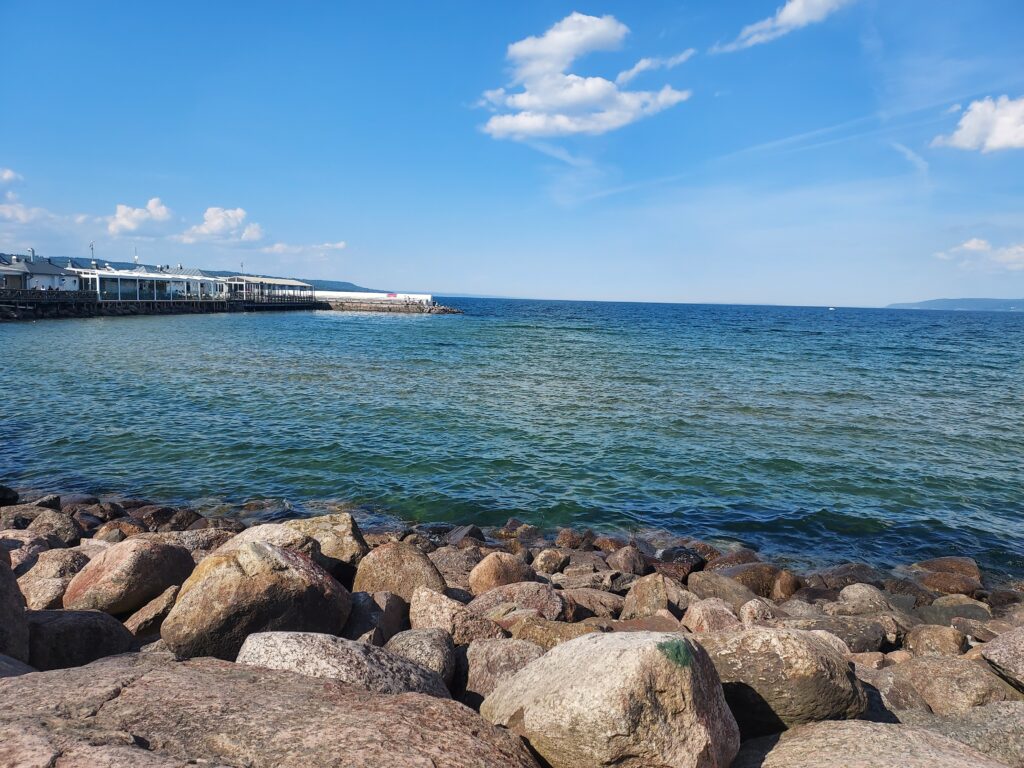

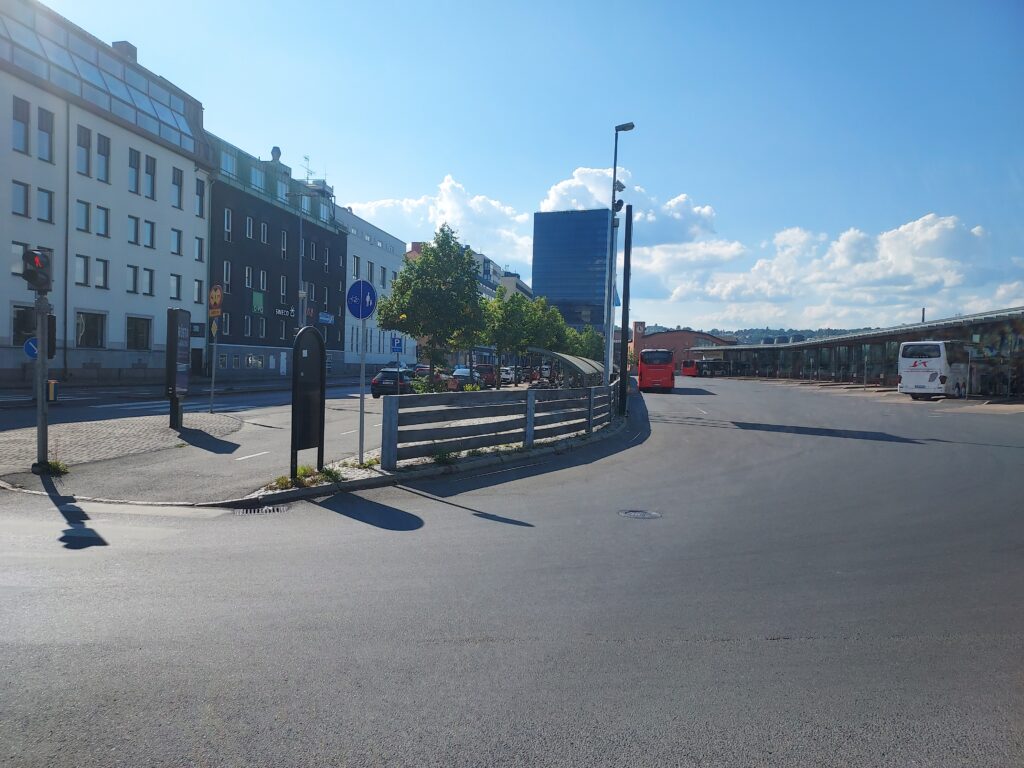
After further research, it turned out that the connection shown in the PDF timetable above fouled the minimum connection time at Vaggeryd (5 minutes), so that it didn’t shown on the ticket machine and wouldn’t make a valid connection.
I arrived Landvetter Airport by a Bus4You coach and took a Ryanair flight back to Stansted, but the flight was delayed by an hour as well. When I landed Stansted, there was no train service at that time and my only option to get home was to take a coach. However, the closest I could get to home by coach was Golders Green, which was still some distance to home but no bus routes ran at that time as well and I had to walk a long way home. By the time I got home, it was already nearly 3 the next day. I don’t want to have such experience again, especially not to take a late-night flight to Stansted again. Luton or Gatwick are much better for me having direct transport stopping close to my home 24 hours a day.
Conclusion
My self-doubt has again got to a high point after this race, similar to my feeling after I did the 16 km benchmark swim in 2020 as a result of pandemic closures.
I admit that I didn’t have enough training. I only swam about 13 km on average per week in the months leading up to this season, as I felt so tired from my training that I couldn’t keep my speed by doing more, and I frequently cut my sessions short when I could no longer keep my desired speed. My focus in the last winter was wholly on speed that I only did training sets for building speed, and I got a satisfactory result in a 3 km race last month. The first 3.7 km in this race was faster than anything I did in past years, and the time gained might be crucial that I could still make the final cut off. If I started slow instead I would not have make the 10:30 cut off.
If there were a bit of wind and waves, like what happened last year, I would not be able to make it. As the Channel is rarely calm, if I knew that even in calm water my speed would drop off by such huge extent hour over hour, I would not be able to make any progress if there were wind, waves, and tide. This actually happened last year. If not because of the pandemic wiped out my trip in 2020, and I knew this 2 years before, I would know much better what to do for my training instead. Now I clearly know that 21 km in calm water is probably my limit in long distance swimming, and I am not going to do anything longer than that unless I can get massive improvement. I will return to 10 – 15 km distance the longest after this season while getting my coach to fix my rubbish technique (which can’t be sustained without tiring my back out).
Also, I am not going to plan anything after this October before I can make a decision about my future career, how to arrange my life such that I can train for everything I want in the coming few years. If it’s infeasible for me to do everything I want, the first sacrifice I make will be long-distance swimming, as it hasn’t brought me any satisfaction or happiness since the pandemic began, and I have never achieved a high level in this sport. Therefore, this race, at 21.5 km, will likely remain my longest swim for a long time afterwards.
2 thoughts on “Race & trip report: Vidösternsimmet”
Nice .
You did it!
Tough travelingexperience.